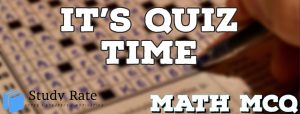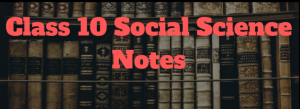Case study Questions Class 10 Science Chapter 15 are very important to solve for your exam. Class 10 Science Chapter 15 Case Study Questions have been prepared for the latest exam pattern. You can check your knowledge by solving case study-based questions for Class 10 Science Chapter 15 Our Environment
Join our Telegram Channel, there you will get various e-books for CBSE 2024 Boards exams for Class 9th, 10th, 11th, and 12th.
In CBSE Class 10 Science Paper, Students will have to answer some questions based on Assertion and Reason. There will be a few questions based on case studies and passage-based as well. In that, a paragraph will be given, and then the MCQ questions based on it will be asked.
Our Environment Case Study Questions With answers
Here, we have provided case-based/passage-based questions for Class 10 Science Chapter 15 Our Environment
Case Study/Passage Based Questions
Question 1:
In any given ecosystem, all living organisms are linked in a systematic chain with respect to their mode of manufacturing food/feeding habits. This sequential interlinking of organisms involving the transfer of food energy from producers through a series of organisms with repeated eating and being eaten is called the food chain. A food chain may have 3-4 trophic levels.
(i) Which of the following statements regarding the food chain is incorrect?
(a) It is a single straight pathway through which food energy travels in the ecosystem.
(b) It adds adaptability and competitiveness to the organisms.
(c) Presence of isolated food chains adds to the instability of the ecosystem.
(d) Food chain binds up the inorganic nutrients of the ecosystem.
Answer: (b) It adds adaptability and competitiveness to the organisms.
(ii) Consider the following food chain.
Grass ⟶⟶A ⟶⟶Frog ⟶⟶ Snake⟶⟶Eagle
Which of the following can be placed at A?
| (a) Grasshopper | (b) Rabbit | (c) Phytoplankton | (d) Rat |
Answer: (a) Grasshopper
(iii) Select the correct food chain.
(a) Aquatic plants ⟶⟶ Tadpole ⟶⟶Water beetle⟶⟶Pike⟶⟶Perch
(b) Grass⟶⟶Grasshopper⟶⟶Snake⟶⟶ Frog⟶⟶ Eagle
(c) Grass⟶⟶ Rabbit⟶⟶ Wild cat⟶⟶ Tiger
(d) Zooplankton ⟶⟶ Phytoplankton ⟶⟶Small fish⟶⟶Fish
Answer: (c) Grass⟶⟶ Rabbit⟶⟶ Wild cat⟶⟶ Tiger
(iv) Food chains are sustained by producers and _____________.
| (a) herbivores | (b) carnivores | (c) omnivores | (d) decomposers |
Answer: (d) decomposers
(v) Select the incorrect statement.
(a) Food chain may terminate at level of herbivore
(b) Food chain is always straight
(c) Food chain may have 3-5 trophic levels
(d) In a food chain, 80 to 90% of potential energy is lost as heat, at each transfer
Answer: (a) Food chain may terminate at level of herbivore
Question 2:
An ecosystem may be defined as a structural and functional unit of the biosphere comprising living organisms and their non-living environment which interact by means of food chains and biogeochemical cycles resulting in energy flow, biotic diversity, and material cycling to form a stable, self-supporting system.
2.1) The two basic processes involved in an ecosystem are :
(a) cycling of materials and food chains
(b) energy flow and self-sustainability
(c) carbon cycle and biotic diversity
(d) cycling of materials and flow of energy
Answer: (d) cycling of materials and flow of energy
2.2) Which among the following is not an artificial ecosystem?
(a) Orchard
(b) Lake
(c) Aquarium
(d) Cropland
Answer: (b) Lake
2.3) The role of fungi and bacteria in an ecosystem is to :
(a) increase the supply of nutrients
(b) increase the supply of energy
(c) release nutrients from dead organic matter
(d) increase the amount of carbon dioxide in the atmosphere
Answer: (c) release nutrients from dead organic matter
2.4) What would be one of the likely results be if all decomposers in a particular ecosystem were wiped out?
(a) The atmospheric reservoir of carbon dioxide would decline.
(b) More food would be available for other consumers in the ecosystem.
(c) The other organisms in the ecosystem would experience lower death rates.
(d) There would be no significant impact, as dead organic matters would spontaneously decompose.
Answer: (a) The atmospheric reservoir of carbon dioxide would decline.
2.5) Which of the following holds true for an ecosystem?
(a) Animals can live without plants.
(b) Plants can live without animals.
(c) Animals can survive for long without plants.
(d) Plants can survive for long without animals.
Answer: (d) Plants can survive for long without animals
Question 3:
The ozone layer is present in the earth’s atmosphere. It is in the form of a protective shield. It contains three oxygen atoms (O3) which are formed as a consequence of photochemical reactions in the environment. Ozone absorbs harmful ultraviolet radiation from the sun. In this way, it protects all living beings on the earth. The thinning of the ozone layer due to various human activities allows more UV radiations to pass through it which leads to harmful effects on man, animals, and plants.
(i) Ozone layer is present in which layer of the atmosphere?
| (a) Troposphere | (b) Mesosphere | (c) Stratosphere | (d) Thermosphere |
Answer: (c) Stratosphere
(ii) Enhanced UV radiations would affect humans and other animals causing
(a) skin cancer
(b) blindness and increased chances of cataracts in the eyes
(c) malfunctioning of the immune system
(d) all of these
Answer: (d) all of these
(iii) Read the given statements regarding ozone.
I. Ozone hole was first discovered over Montreal in 1976.
II. Ozone is a result of photochemical reactions in which starting molecule is oxygen.
III. Harmful chemicals produce active chlorine in presence of UV radiations, that destroys ozone layers.
IV. Ozone absorbs UV-radiations in the range of 800 – 1100 A.
Select the option that correctly identifies them as true (T) and false (F).
| I | II | III | IV |
| (a) F | T | T | F |
| (a) F | F | T | T |
| (c) T | T | F | F |
| (d) T | F | T | T |
Answer: (a)
(iv) Which of the following are related to depletion of ozone layer?
| (a) Chlorofluorocarbons | (b) Halons |
| (c) Carbon tetrachloride | (d) All of these |
Answer: (d) All of these
(v) Refer to the given events regarding thinning of ozone layer and arrange them in a sequence.
I. Active chlorine is produced in presence of UV radiations.
II. CFCs are released in the air.
III. Ozone layer in the stratosphere become thin.
IV. CFCs enter from troposphere into stratosphere.
V. Use of CFCs in refrigerators and air conditioners as coolants.
VI. Active chlorine destroy ozone by converting it into oxygen.
| (a) V →→ II →→ I →→ VI→→IV →→ III | (b) V →→ II →→ IV →→I →→VI →→ III |
| (c) V→→ I →→ II →→ III→→VI →→ IV | (d) V →→ IV→→ II →→I →→ III →→ VI |
Answer: (b) V →→ II →→ IV →→I →→VI →→ III
Hope the information shed above regarding Case Study and Passage Based Questions for Class 10 Science Chapter 15 Our Environment with Answers Pdf free download has been useful to an extent. If you have any other queries of CBSE Class 10 Science Our Environment Case Study and Passage Based Questions with Answers, feel free to comment below so that we can revert back to us at the earliest possible
By Team Study Rate



